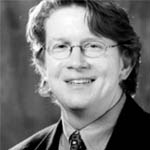
A $200,000 grant from the National Science Foundation will enable a team of U.S. and Chinese researchers to identify instructional supports that lead to higher levels of mathematics achievement.
Thomas Smith and Paul Cobb, professors at Vanderbilt’s Peabody College of education and human development, working in partnership with researchers in China and Virginia Polytechnic Institute and State University, hope to shed light on the question of what makes math instruction in China more effective than instruction in the U.S. Their research has implications for improving the math achievement of U.S. students, especially under the new Common Core State Standards.

International comparisons of students in mathematics have shown higher performance by several nations than by students in the U.S. In the 2009 Programme for International Student Assessment (PISA), students in Shanghai, China, had the highest average scores—600 compared to 487 by U.S. students. More recently, the 2011 Trends in International Mathematics and Science Study (TIMSS) highlighted the rapidly improving performance of 4th and 8th grade students in Hong Kong.
But while much has been written about the differing achievement levels between East Asian nations and the U.S., neither PISA nor TIMSS was designed to identify the specific supports for instructional improvement—such as teacher professional development, teacher collaboration, or school leadership—that enables the success of Chinese students.
“Even though cultural differences such as the value of education in society are major contributors to the achievement gap between China and the United States, there are also fundamental differences in the ways in which the profession of teaching is organized and supported that may be leading to differences in teaching quality as well,” Smith said.
Smith and Cobb, along with Yiming Cao of Beijing Normal University, have been collecting data on mathematics in four large urban districts in both the U.S. and China since 2008. Their efforts have been supported by previous grants from the NSF as well as from the National Office for Educational Sciences Planning in China’s Ministry of Education.

The latest NSF grant will support a one-year comparative study of the instructional support systems in each nation using the data collected thus far. The researchers will use quantitative methods to compare and contrast school and district level supports, including coaching, teacher collaboration, and professional development, and their impact on instructional quality and student achievement. Min Sun, a researcher based at Virginia Tech, will contribute expertise in data analysis and experience with cross-national comparative studies.
In the U.S., the researchers have followed teachers and schools in districts that have adopted standards-based curricula and have also invested in teacher learning through professional development, mathematics coaching, and the development of principals as instructional leaders in mathematics. The Chinese districts followed are all implementing China’s New Curriculum Reform, an overall mathematics curriculum in grades 1-12.
Data collection in both countries has focused on the middle grades. Using surveys adjusted for the different contexts of each nation, the team has gathered information about curricular materials including guidance for teachers, pull-out teacher professional development, teacher collaboration, mathematics coaching practices, school-leader instructional practices, and school structure and climate. The researchers also have access to student achievement data based on standardized tests and assessments designed and conducted in China.
[lquote]“In addition to identifying supports that have been effective in creating high levels of achievement among Chinese students, the analysis may also prove helpful to other researchers interested in comparing mathematics instruction across nations,”[/lquote] Smith said.
Findings that result from the analysis will be disseminated to researchers in mathematics education, education policy and leadership, and international comparative studies. The results should also prove useful for district personnel and school leaders, as well as organizations that support districts and schools through professional development.
Written by Kurt Brobeck